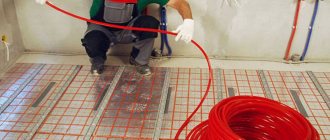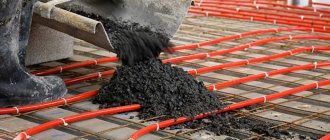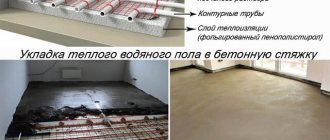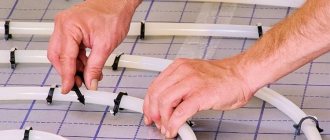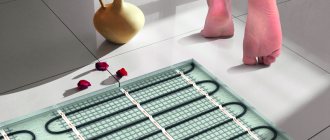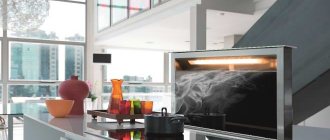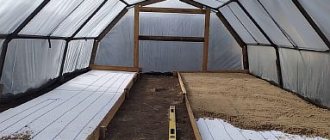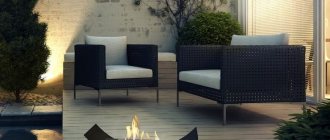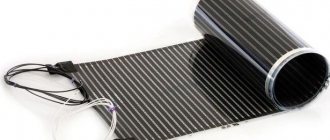The idea of installing a heated floor in the kitchen under the tiles appears exactly at the moment when you first have to stand barefoot on the tiles. Of course, this flooring has its advantages:
- not afraid of moisture;
- hard to scratch or damage;
- has a wide color palette;
- easy to install.
Considering that things often spill or fall apart in the kitchen, the ability to quickly clean up the mess is especially appreciated. Tile is more than preferable in this regard.
But what to do with the cold? After all, in addition to the place where food is prepared, the kitchen is often also a dining room: a gathering place for family and friends. Warm floor tiles for the kitchen have not yet been invented, but a warm floor on top of which you can place the desired tile is a very popular solution on today’s market.
Read more about what a heated floor is, its types and installation later in the article.
Is heated flooring really necessary in the kitchen?
In general, it all depends on how well your central heating works and what kind of flooring you have in the kitchen.
If you have a wooden floor, then there is no question of any heating, since this will quickly dry out the wood, which means huge cracks and creaking will appear. Even without heating, wood is a fairly warm material and walking on it barefoot is always good.
Also, we do not recommend that you install warm floors under linoleum. Do not forget that this is a chemical and when heated, such a floor will release phenol, which is completely unhealthy.
In other cases, a warm floor is what you need. And, if your batteries heat very little, this option will be a great alternative to additional heating devices. It ultimately consumes much less electricity, but the heating effect is much better.
Is there a difference between heating a specific and small area of the kitchen with a heater or the whole room at once? Moreover, in this case the heat comes from the very bottom to the top, that is, the heating is uniform, unlike other sources.
When one battery or electric radiator is running, the floor still remains cold, since heat goes exclusively upward, according to the laws of physics.
And the question of whether a heated floor in the kitchen is needed under the tiles should not arise at all. Of course you need it, she’s so cold! The main thing here is to figure out what it costs, where and how, because there are many options for arranging a heated floor and they all differ in price and resource consumption.
How to choose the right coating
First of all, you should focus on the type of room chosen where you plan to install heated floors under the tiles. The selected material must have a number of characteristics, such as resistance to possible deformation, durability, strength and fire resistance. Maintenance of the coating should be minimal, and it is recommended to choose a non-slippery surface. This will help reduce the possible risk of injury in the future.
Installation can be carried out on the following surfaces:
- liquid;
- cork;
- tiled
Self-leveling floor
It is considered to be the main competitor of ceramic coatings. It is quite environmentally friendly and functional, and is not afraid of temperature changes and mechanical damage. It is elastic, which will allow you to drop the dishes without harming them. Such a coating has a considerable service life, which is calculated in decades. At the same time, the choice of material used is quite extensive. The main disadvantage is the cost, and not every craftsman can carry out installation on his own.

Cork floor
It is made from cork, or rather from its bark. It is capable of giving the room the necessary comfort, like any other natural material. Such material will not only keep the room warm, but also have a positive effect on human well-being. Does not belong to the category of materials containing allergens. Repels moisture and practically does not burn. Often used as high-quality and, most importantly, cheap sound insulation. It does not absorb odors, so you can safely use it in the kitchen. Expensive species will not be cheap, so it is better to entrust their installation to specialists. If cracks form during installation, the integrity of the coating will be compromised, and moisture will penetrate into its base, which will eventually destroy it.
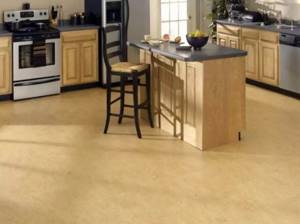
Tiled floor
Using tiles or ceramics can be prestigious, because its cost can be exorbitant. Experienced craftsmen are able to lay out entire pictures, making the tiled floor almost an exhibition or museum piece. Even an amateur can do its installation, because it is not necessary to create a masterpiece, the main thing is to lay out the material used evenly. The top layer of the floor covering is resistant to impacts, sunlight and household chemicals. Finding the right color will not be difficult, since its diversity can amaze everyone. The disadvantages include a rather slippery surface, and you can immediately say goodbye to dropped dishes. If you don't heat it up, it will always be cold. For installation you will need a clean and level base.

In what cases is a warm floor really necessary?
Sometimes heated floors are an additional convenience, but there are special cases when it becomes simply necessary.
1. If you were remodeling and demolished the wall between the balcony and the kitchen in order to expand the space, then one battery designed for a smaller cubic capacity will no longer be enough.
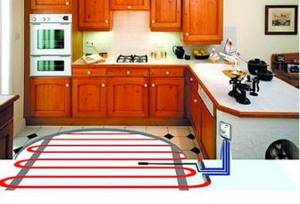
The kitchen will not warm up well, so you need to either install a second radiator or install a heated floor. The last option is preferable, since heating occurs over the entire area.
2. If you made a countertop in place of the window sill above the radiator in the kitchen. In this case, all the heat that should go up from the battery does not go anywhere and as a result, the air temperature in the kitchen is low. Of course, you can make small holes in the countertop to allow warm air to escape, but in practice, this maneuver is of no use.
3. If you have small children, it is difficult to get them to wear slippers all the time. Here it is better not to skimp and make heating under the tiles, since in the cold season children can often get sick. This is especially true for very young children who are still crawling.
Also, don’t forget this thing: if you make a warm floor in the kitchen using any electric heaters, then this does not oblige you to anything at all. You can turn the heating on and off whenever you want, at least once a month. So, equipment of such a floor does not necessarily involve enormous costs for light.
IQ Floor Mat 7 sq.m.
| Manufacturer: | IQ WATT |
| View: | heating mat |
| Power: | 1050 W |
| Heating area: | 7 m2 |
| Installation type: | into a layer of tile adhesive |
for comparison
RUB 17,010
Product added to cart
| Photo | Name | Price per piece | Quantity | Price |
| IQ Floor Mat 7 sq.m. | 17,010 rub. | < 1 > | 17,010 17,010 rub. |
There are 0 items in the cart worth 0 rub.
Go to cart
Buy
Availability
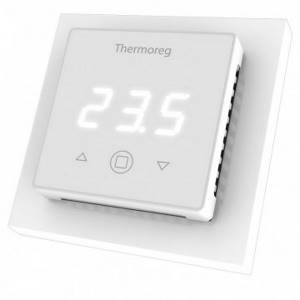
Which underfloor heating is better: water or electric?
In general, water is better, in any case, because it is more reliable and durable. Electric floors have one big disadvantage - they cannot support heavy furniture. We emphasize - heavy, for example, a kitchen set. If it stands on electrical wiring, then over time thermal overheating will occur and the entire floor will stop functioning.

And it is absolutely impossible to fix such a breakdown (however, as well as to find a burnt out place), you need to completely remove the entire coating and change the heating system. And, okay, if we’re talking about laminate, which can be disassembled and assembled, what about tiles? There is no way you can remove it without chipping, it’s simply impossible.
Many people do this: they calculate the places where the furniture will stand and leave this place free. But, in this case, you need to be prepared for the fact that you will no longer make any rearrangements.
And the water one is durable, very practical, but it also has its “buts”.
This cannot be done in apartment buildings, since excess pipes can lead to imbalance of the entire system or the removal of heat from neighbors. Also, in order to lay pipes along the floor, it is necessary to completely remove all the radiators, therefore, this option is suitable if you plan to equip the entire apartment this way, and not just the kitchen.
Then, heating water in the case of central heating is just a lottery. Today the heat is good, but tomorrow the radiators are barely warm. And, if the radiator on the wall will definitely give off minimal heat, then the floor is much worse, because the pipes are covered with a thick layer of screed and tiles...
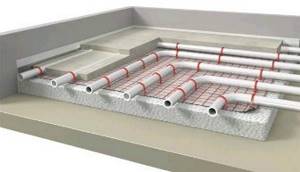
No, of course, you can do it on a grand scale by installing your own individual heating boiler. But it's expensive, very expensive.
Well, and most importantly, for this type of work you need to obtain permission, which is not always possible even with a bribe.
Therefore, think three times if you decide to make such a floor in your apartment. First find out if the utility services will give you the go-ahead and only then act.
And one more thing: the water floor “eats” the height of the room, and quite significantly, by about 15 centimeters. For a “Stalin” building with three-meter ceilings, this is not a problem at all, but for a “Khrushchev” building it is no longer the best option.
The ceiling height in apartments of that era is only 2.20 meters. Well, where else to cut?
Teplolux Tropix 10 sq.m.
| Manufacturer: | Teplolux |
| Model: | Tropix |
| View: | heating mat |
| Power: | 1600 W |
| Heating area: | 10 m2 |
| Installation type: | into a layer of tile adhesive |
for comparison
RUB 16,361
Product added to cart
| Photo | Name | Price per piece | Quantity | Price |
| Teplolux Tropix 10 sq.m. | 16,361 rub. | < 1 > | 16,361 16,361 rub. |
There are 0 items in the cart worth 0 rub.
Go to cart
Buy
Availability
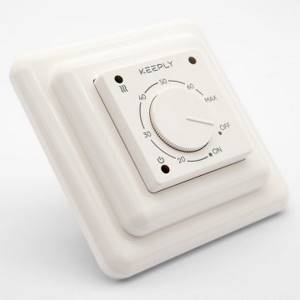
Water floor in a private house: what heating source is optimal in this case?
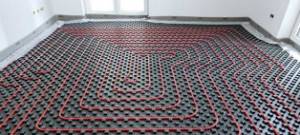
In a private house there are no barriers to a water floor, but here you also need to look at how you heat the room. If you have a gas heating boiler or a solid fuel one, then you can make a water floor. If you heat with an electric boiler, then you will simply go broke heating water! The bills will be unrealistically large and in this case you need to choose electric ones, they are much more economical.
If you have a boiler, then you can imagine from its example what constant heating of water is and how much it costs. Moreover, in houses, as a rule, the cubic capacity is larger than in apartments, which means that a lot of water will circulate in the pipes. So, think for yourself, decide for yourself how best to make a heated floor in the kitchen, starting from your initial data.
IQ Floor Mat 10 sq.m.
| Manufacturer: | IQ WATT |
| View: | heating mat |
| Power: | 1500 W |
| Heating area: | 10 m2 |
| Installation type: | into a layer of tile adhesive |
for comparison
RUB 23,090
Product added to cart
| Photo | Name | Price per piece | Quantity | Price |
| IQ Floor Mat 10 sq.m. | 23,090 rub. | < 1 > | 23,090 23,090 rub. |
There are 0 items in the cart worth 0 rub.
Go to cart
Buy
Availability
Electric heated floor
If making a water floor doesn’t work out, then you should pay attention to electric floors. In the next block we will look at the types of heating materials, but now, let's find out the exact pros and cons of such a solution.
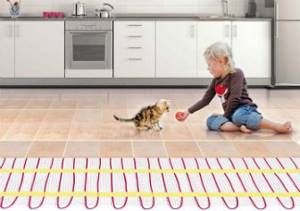
As we already wrote above, electric shades cannot be placed under furniture or under the kitchen. This applies to large sets and kitchen corners. But you can place a table and chairs on it, but, again, if these shadows are under the tiles and a large layer of screed. If they are directly under the laminate, then even the table legs can cause the elements to overheat.
If you don’t make a warm floor right under the table, then what’s the point of making it anyway? Agree, the most pleasant thing about it is that you can sit at the table with warm feet.
So, the most ideal covering on top of electrical wiring is a strong tile.
The advantages of this floor are that you can completely lay it with your own hands, unlike water flooring. They need a specialist, and not the worst one, to make the diagram correctly, calculate the pressure, etc., etc....
And electric floors are an ordinary constructor that does not require any special knowledge. The main thing is to connect the elements correctly, relying on detailed instructions. Installation takes very little time.
It is also good that the electric floor can be turned on only when necessary, and different degrees of heating can be set.
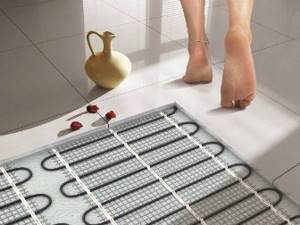
But, if we are talking not about a private house, but about an apartment, do not forget that you will still have to pay for both central heating and flooring. There is no way to completely abandon it, because an electric floor does not last forever and it can burn out at the most inopportune moment, for example, in winter, at a temperature of minus 30!
So what will you do then? Heating an apartment in this weather with ordinary electric radiators is almost impossible; all the same, the air will remain cold. And, it’s good if at this moment you have money on hand to quickly redo the floor, but what if not?
So, it is in apartments that we recommend combining heating, and considering the electric floor to be simply an additional source of heat, and not the main one. If we think this way, then there are simply no shortcomings in the electric warm field.
Pros and cons of warm tiles
Floor cladding with low thermal conductivity has the following advantages:
- sensation of warmth upon tactile contact;
- product strength;
- moisture resistance;
- sound absorption capacity;
- environmental friendliness;
- resistance to aggressive chemicals, pollution, ultraviolet radiation;
- wear resistance;
- The protective coating of the tiles has an antibacterial effect.
The disadvantages of the products include their high cost.
What types of electric floor heating systems are there?
In this block, let's look at which electric floor is best to choose. There are several types of them and each of them is good in its own way, and we will analyze in which cases one or the other is better.
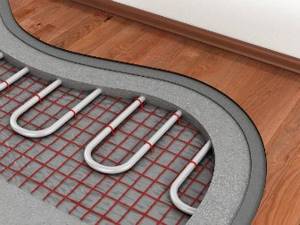
1. Cable electric floors are, roughly speaking, just shades that are laid out on the floor and need to be covered with a mesh and screed. It is this type that can be equipped with a thermostat, which can be adjusted to any desired heating cycle. Let's say you can set the heating for a week, with turn-on intervals of an hour or two. This saves 50% of energy, which is quite a lot.
2. Rod electric floors - such floors are also called carbon floors, because they consist of, in fact, carbon rods. Such floors are durable, the manufacturer promises 20 or more years of service, but they are more expensive than simple cable ones. The rod floor is suitable for any type of covering and you can safely place heavy furniture on it.
3. Film heated floors - their advantage is that they are extremely thin and do not require screed. They can be laid directly on top of a screed or an old wooden floor, and these sheets can be covered with thin plywood. And only then can you lay Lenoleum or laminate. Such floors are not suitable for tiles.
Warmstad 7 sq.m.
| Manufacturer: | Warmstad |
| View: | heating mat |
| Power: | 1060 W |
| Heating area: | 7 m2 |
| Installation type: | into a layer of tile adhesive |
for comparison
RUB 7,695
Product added to cart
| Photo | Name | Price per piece | Quantity | Price |
| Warmstad 7 sq.m. | 7,695 rub. | < 1 > | 7,695 7,695 rub. |
There are 0 items in the cart worth 0 rub.
Go to cart
Buy
Availability
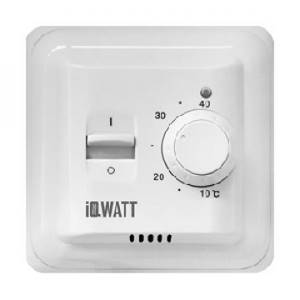
People's reviews about different types of heated floors
And here we have selected the most revealing reviews from people who have already installed heated floors. There are some positive reviews, and some not so good ones. But, read for yourself and draw your own conclusions. Here, for example, is a review of film heated floors:

The person listed in detail and from a practical point of view the cases when it is worth using such a floor. What else do people say on the forums?

There is also a myth about the enormous harm caused by electric heated floors due to the electromagnetic field they create. Here's what scientists say about this:

There is also a rumor that such floors can cause impotence and even diabetes. We believe that these stories are not worth a damn, so you should not believe them.
In conclusion, we can say this: warm floors are not an urgent need, but rather a pleasant bonus. Therefore, whether it is worth doing it or not, your wallet will tell you. And now you know for sure which type is better to choose!
Teplolux Tropix 7 sq.m.
| Manufacturer: | Teplolux |
| Model: | Tropix |
| View: | heating mat |
| Power: | 1120 W |
| Heating area: | 7 m2 |
| Installation type: | into a layer of tile adhesive |
for comparison
RUB 12,827
Product added to cart
| Photo | Name | Price per piece | Quantity | Price |
| Teplolux Tropix 7 sq.m. | 12,827 rub. | < 1 > | 12,827 12,827 rub. |
There are 0 items in the cart worth 0 rub.
Go to cart
Buy
Availability
